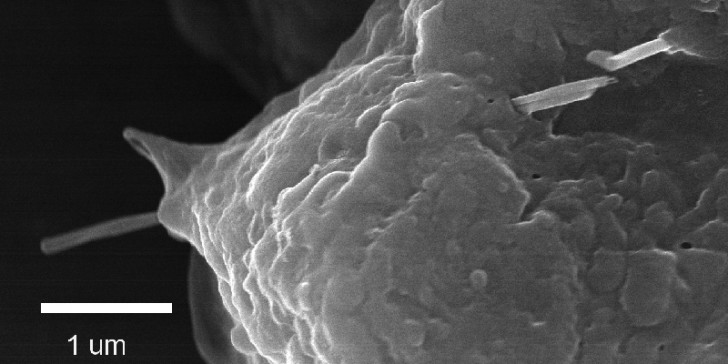Carcinogenicity of nanomaterials

The German Federal Environment Agency (UBA) has published a review of available studies on the carcinogenicity and mutagenicity of nanomaterials. The review, conducted by the Fraunhofer Institut of Toxicology and Experimental Medicine on behalf of the UBA, includes the assessment of more than 100 single studies using a relational database. Within the selected materials, nano-silver was found to be the most toxic. Moreover, the review suggests to distinguish “inert” nanomaterials from those exhibiting specific toxicity based on a LOEL (lowest observed effect level) of 0.1mg/m3. Nanotubes, on the other hand, should be treated in separate group, suggest the authors.
Carcinogenicity studies with several types of respirable particles and fibres indicate a carcinogenic potential from inhalation and there is concern that the carcinogenic potency of nanomaterials is higher than for the corresponding micromaterials. In this research project, long term studies with nanomaterials were used to identify relevant indicators of toxicity of nanomaterials including possible precursors of carcinogenicity. Due to the heterogeneous characteristics of the materials and the different study types, a structured and systematic data analysis was performed by means of a relational database (PaFtox). More than 100 inhalation studies and instillation studies with rodents with Carbon Black, silicon dioxide, metals or metal oxides, and carbonnanotubes were analysed. Effects like neutrophil number, total protein and LDH content in the bronchioalveolar lavage fluid (BALF) are frequently measured and are sensitive indicators of toxicity of all particles investigated. In addition, infiltration of inflammatory cells in the lung and increased lung weights are often observed. The LOELs of nano-objects are generally lower than the LOELs of the corresponding larger objects and they differ by several orders of magnitude between analysed substances: Silver was identified as the most toxic nanomaterial within our selection of nanomaterials. Sustained inflammation can be seen as one possible early event in the sequence of cancer development and nanomaterials can be grouped on basis of their potential to generate inflammation. A preliminary LOEL (based on inflammatory parameters) of 0.1 mg/m3 (exposure 24 h/d, 7 d/wk) is proposed to distinguish the so called “inert” nanomaterials (e.g. Carbon Black) from nanomaterials with specific toxicity. Our data further support to have nanotubes in a separate group.
Source: German Federal Environment Agency (Umweltbundesamt, UBA)
Image: MWCNT passing through an alveolar epithelial cell. Image source: Mercer RR et al., Particle Fibre Toxicol 7:28, 2010.
Reviwe: UBA. Carcinogenicity and Mutagenicity of Nanoparticles – assessment of Current Knowledge as Basis for Regulation. Texte 50/2014